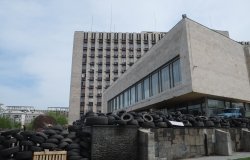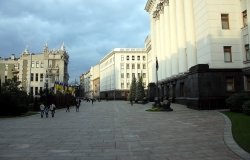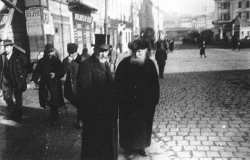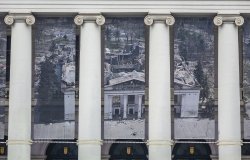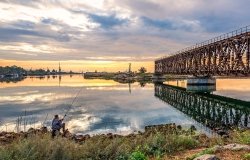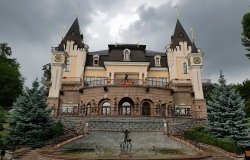
A blog of the Kennan Institute
A Portrait of Artistic Defiance in Kherson

The stories from recently liberated Kherson are horrific. The Russian occupying forces killed, tortured, kidnapped, and interned residents whom they suspected of espionage, sabotage, and an unwillingness to accept their new lives inside the Russian Federation. Families were split, as some headed west further into Ukraine and abroad; others relocated, often involuntarily, east, into Russia.
Captured during the first days of the war, many residents had no place to go as their province, which had a prewar population of 290,000, fell quickly to the invading army. Some no doubt welcomed the arriving Russians, and some chose to collaborate with the occupation administration. Many more did not, trying various ways to preserve their humanity and their Ukrainianness.
The city was founded late in the 18th century by Catherine the Great and her favorite, Grigory Potemkin. The original fort and shipyards supported the empress’s campaign to capture southern territories along the Black Sea from the Turks. The city grew as an important port and shipbuilding and military center. The Nazis and Soviets fought bitterly over the industrial center during World War II, leading to slow postwar redevelopment and a declining Russian population. A once-vibrant Jewish community, which had made up a quarter of the city’s population, was annihilated during the Holocaust.
Over 90 percent of the over 80 percent of Kherson’s eligible voters cast their ballots in favor of Ukrainian independence in 1991, and three-quarters of the city’s residents proclaimed themselves to be Ukrainian in the 2001 Ukrainian census. And even if voters gave the preponderance of their support to so-called “pro-Russian” and “Euro-sceptic” parties and candidates over the past three decades, attempts to provoke pro-Russian backlash against the Ukrainian government remained marginal.
Resistance grew throughout the eight-month occupation in the face of the increasingly predatory policies of Russian authorities. Schoolteachers quietly greeted their classes each morning with the patriotic slogan “Glory to Ukraine!” (“Slava Ukraeeni!”). Grandmothers refused to give accurate directions to Russian soldiers. The arts became important too.
Young performance artist Daria returned to her native Kherson a year ago to work at a local television station. While under occupation, she helped people connect with relatives and provided aid to the elderly and to children. She soon came under Russian scrutiny and made her way through Crimea to Georgia and into exile. She used her presence on social media to build a network in defiance of her city’s occupation.
As a final act of defiance before heading into exile, Daria filmed a music video based on Ukrainian writer Oleksandr Oles’s poem “The Charms of the Night” (“Chary nochi”) celebrating Kherson, its monuments and countryside. Oles (1878–1944), whose real name was Oleksandr Kandyba, was a prominent Ukrainian poet and father of well-known poet and nationalist activist Oleh Olzhych, who perished in a Nazi labor camp in 1944. These associations strengthen the video’s contempt for the Russians who occupied her city.
Other artistic acts of protest were more modest, but no less powerful. Members of Yellow Ribbon, an informal group of activist-artists, spray painted yellow and blue symbols of Ukraine on Russian billboards, banks, passport agencies, and other symbols of occupation. The Ukrainian letter “Ï” (“Yee,” as in “Kиїв”), a letter which exists in the Ukrainian alphabet but not the Russian one, became a favorite tag.
The Russians took an enlarged interest in signs of Ukrainian culture. They infamously stole Potemkin’s bones from his tomb and returned them to Russia for reburial (apparently doubting the security of their new “forever” Russian city of Kherson). When the call came to evacuate to more defensible positions across the Dnipro River, Russian troops took the time to steal 15,000 pictures from the Kherson Art Museum. The Russian zookeeper at the local children's zoo absconded with llamas, racoons, and other animals from the collection. These last-ditch, criminal efforts to remove Kherson’s cultural legacy failed to prevent the reality that the city is once again Ukrainian.
The war in Kherson is hardly over. Russians are just across the river. As elsewhere in Ukraine, the Russians have targeted water systems, electrical services, and other critical infrastructure. Russian bombs fall regularly on civilians, and families remain tragically scattered around the world. The remaining winter months promise little but hardship. But memories of the joy of liberation captured through song, images sprayed onto walls, and the knowledge of having endured will carry the city and its residents through.
The opinions expressed in this article are those solely of the author and do not reflect the views of the Kennan Institute.
See our newest content first.
Subscribe to receive the latest analysis from Focus Ukraine.
About the Author

Blair A. Ruble
Former Wilson Center Vice President for Programs (2014-2017); Director of the Comparative Urban Studies Program/Urban Sustainability Laboratory (1992-2017); Director of the Kennan Institute for Advanced Russian Studies (1989-2012) and Director of the Program on Global Sustainability and Resilience (2012-2014)
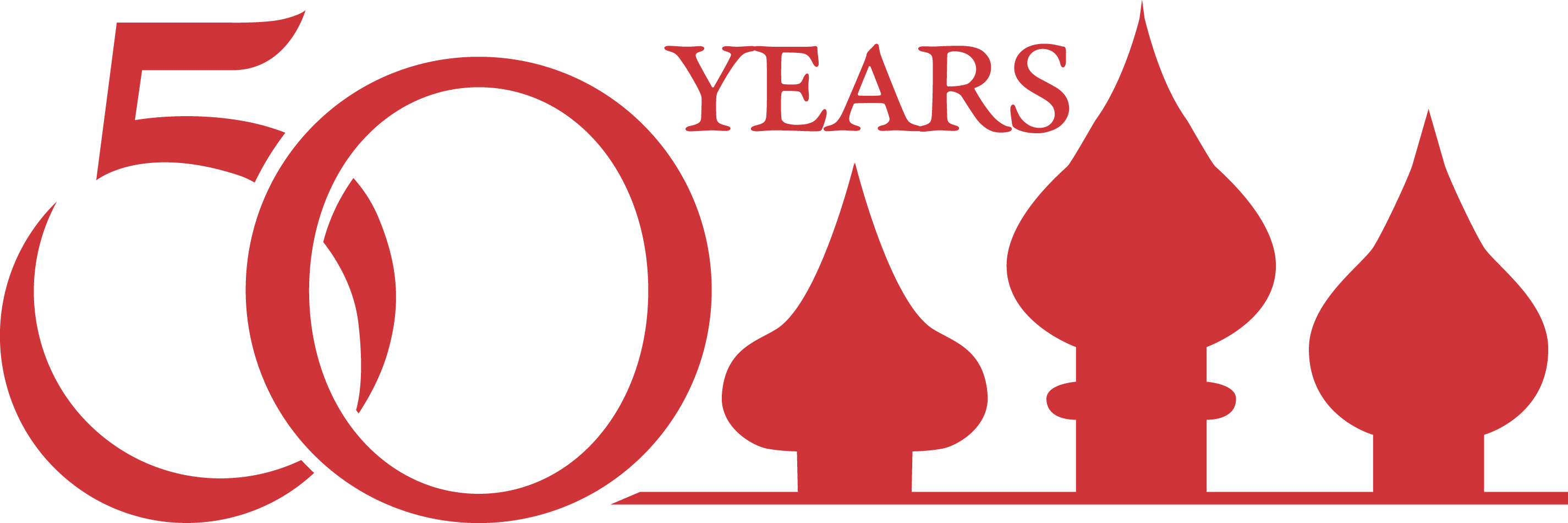
Kennan Institute
The Kennan Institute is the premier US center for advanced research on Eurasia and the oldest and largest regional program at the Woodrow Wilson International Center for Scholars. The Kennan Institute is committed to improving American understanding of Russia, Ukraine, Central Asia, the South Caucasus, and the surrounding region though research and exchange. Read more
